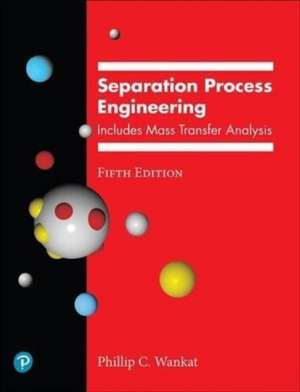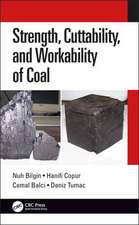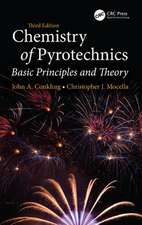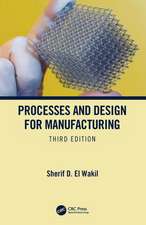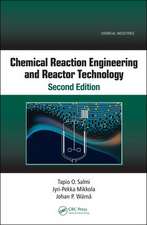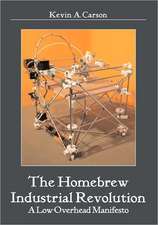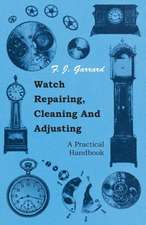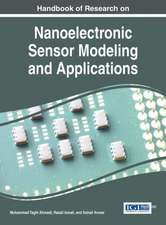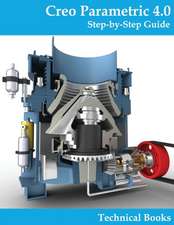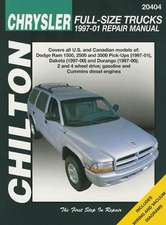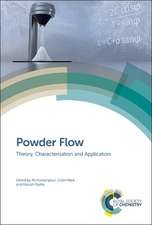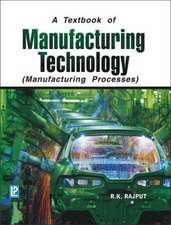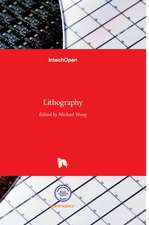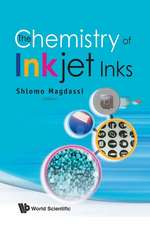Separation Process Engineering
Autor Phillip Wankaten Limba Engleză Paperback – 24 noi 2022
Preț: 812.50 lei
Preț vechi: 1055.20 lei
-23% Nou
Puncte Express: 1219
Preț estimativ în valută:
155.49€ • 168.84$ • 130.61£
155.49€ • 168.84$ • 130.61£
Carte disponibilă
Livrare economică 01-15 aprilie
Livrare express 15-21 martie pentru 83.06 lei
Preluare comenzi: 021 569.72.76
Specificații
ISBN-13: 9780137468041
ISBN-10: 0137468040
Pagini: 1168
Dimensiuni: 258 x 206 x 47 mm
Greutate: 2.04 kg
Ediția:5 ed
Editura: Pearson Education (US)
ISBN-10: 0137468040
Pagini: 1168
Dimensiuni: 258 x 206 x 47 mm
Greutate: 2.04 kg
Ediția:5 ed
Editura: Pearson Education (US)
Cuprins
Preface xxiii
Acknowledgments xxv
About the Author xxvii
Nomenclature xxix
Chapter 1. Introduction to Separation Process Engineering 1
1.0 SummaryObjectives 1
1.1 Importance of Separations 1
1.2 Concept of Equilibrium 3
1.3 Mass Transfer Concepts 4
1.4 Problem-Solving Methods 5
1.5 Units 6
1.6 Computers and Computer Simulations 7
1.7 Prerequisite Material 7
1.8 Other Resources on Separation Process Engineering 9
References 10
Problems 11
Chapter 2. Flash Distillation 13
2.0 SummaryObjectives 13
2.1 Basic Method of Flash Distillation 13
2.2 Form and Sources of Equilibrium Data 15
2.3 Binary VLE 17
2.4 Binary Flash Distillation 26
2.5 Multicomponent VLE 32
2.6 Multicomponent Flash Distillation 36
2.7 Simultaneous Multicomponent Convergence 40
2.8 Three-Phase Flash Calculations 45
2.9 Size Calculation 45
2.10 Using Existing Flash Drums 50
References 51
Problems 52
Appendix A. Computer Simulation of Flash Distillation 62
Lab 1. Introduction to Aspen Plus 62
Lab 2. Flash Distillation 69
Appendix B. Spreadsheets for Flash Distillation 72
Chapter 3. Introduction to Column Distillation 75
3.0 SummaryObjectives 75
3.1 Developing a Distillation Cascade 75
3.2 Tray Column Distillation Equipment 82
3.3 Safety 85
3.4 Specifications 86
3.5 External Column Balances 88
References 92
Problems 92
Chapter 4. Binary Column Distillation: Internal Stage-by-Stage Balances 99
4.0 SummaryObjectives 99
4.1 Internal Balances 99
4.2 Binary Stage-by-Stage Solution Methods 103
4.3 Introduction to the McCabe-Thiele Method 109
4.4 Feed Line 113
4.5 Complete McCabe-Thiele Method 120
4.6 Profiles for Binary Distillation 123
4.7 Open Steam Heating 125
4.8 General McCabe-Thiele Analysis Procedure 129
4.9 Other Distillation Column Situations 134
4.10 Limiting Operating Conditions 141
4.11 Efficiencies 143
4.12 Subcooled Reflux and Superheated Boilup 145
4.13 Simulation Problems 146
4.14 New Uses for Old Columns 148
4.15 Comparisons between Analytical and Graphical Methods 149
References 150
Problems 150
Appendix A. Computer Simulation of Binary Distillation 165
Lab 3. Binary Distillation 165
Appendix B. Spreadsheet for Binary Distillation 169
Chapter 5. Introduction to Multicomponent Distillation 171
5.0 SummaryObjectives 171
5.1 Calculational Difficulties of Multicomponent Distillation 171
5.2 Profiles for Multicomponent Distillation 176
5.3 Stage-by-Stage Calculations for CMO 181
References 186
Problems 187
Appendix A. Simplified Spreadsheet for Stage-by-Stage Calculations
for Ternary Distillation 192
Chapter 6. Exact Calculation Procedures for Multicomponent Distillation 195
6.0 SummaryObjectives 195
6.1 Introduction to Matrix Solution for Multicomponent Distillation 195
6.2 Component Mass Balances in Matrix Form 196
6.3 Initial Guesses for Flow Rates and Temperatures 200
6.4 Temperature Convergence 201
6.5 Energy Balances in Matrix Form 203
6.6 Introduction to Naphtali-Sandholm Simultaneous Convergence Method 206
6.7 Discussion 207
References 208
Problems 208
Appendix. Computer Simulations for Multicomponent Column Distillation 214
Lab 4. Simulation of Multicomponent Distillation 214
Lab 5. Pressure Effects and Tray Efficiencies 216
Lab 6. Coupled Columns 220
Chapter 7. Approximate Shortcut Methods for Multicomponent Distillation 223
7.0 SummaryObjectives 223
7.1 Total Reflux: Fenske Equation 223
7.2 Minimum Reflux: Underwood Equations 228
7.3 Gilliland Correlation for Number of Stages at Finite Reflux Ratios 231
References 234
Problems 235
Chapter 8. Introduction to Complex Distillation Methods 241
8.0 SummaryObjectives 241
8.1 Breaking Azeotropes with Hybrid Separations 241
8.2 Binary Heterogeneous Azeotropic Distillation Processes 243
8.3 Continuous Steam Distillation 251
8.4 Pressure-Swing Distillation Processes 257
8.5 Complex Ternary Distillation Systems 259
8.6 Extractive Distillation 266
8.7 Azeotropic Distillation with Added Solvent 272
8.8 Distillation with Chemical Reaction 274
References 277
Problems 278
Appendix A. Simulation of Complex Distillation Systems 292
Lab 7. Pressure-Swing Distillation for Separating Azeotropes 292
Lab 8. Binary Distillation of Systems with Heterogeneous Azeotropes 295
Lab 9. Simulation of Extractive Distillation 298
Appendix B. Spreadsheet for Distillation curve Generation for Constant
Relative Volatility at Total Reflux 302
Chapter 9. Batch Distillation 303
9.0 SummaryObjectives 303
9.1 Introduction to Batch Distillation 303
9.2 Batch Distillation: Rayleigh Equation 305
9.3 Simple Binary Batch Distillation 307
9.4 Constant-Mole Batch Distillation 312
9.5 Batch Steam Distillation 314
9.6 Multistage Binary Batch Distillation 317
9.7 Multicomponent Simple Batch Distillation and Residue Curve Calculations 321
9.8 Operating Time 324
References 326
Problems 326
Appendix A. Calculations for Simple Multicomponent Batch Distillation and
Residue Curve Analysis 334
Chapter 10. Staged and Packed Column Design 337
10.0 SummaryObjectives 337
10.1 Staged Column Equipment Description 338
10.2 Tray Efficiencies 344
10.3 Column Diameter Calculations 351
10.4 Balancing Calculated Diameters 356
10.5 Sieve Tray Layout and Tray Hydraulics 358
10.6 Valve Tray Design 364
10.7 Introduction to Packed Column Design 366
10.8 Packings and Packed Column Internals 366
10.9 Packed Column Design: HETP Method 368
10.10 Packed Column Flooding and Diameter Calculation 371
10.11 Economic Trade-Offs for Packed Columns 378
10.12 Choice of Column Type 379
10.13 Fire Hazards of Structured Packings 381
References 382
Problems 385
Appendix. Tray and Downcomer Design with Computer Simulator 392
Lab 10. Detailed Design 392
Chapter 11. Economics and Energy Efficiency in Distillation 397
11.0 SummaryObjectives 397
11.1 Equipment Costs 397
11.2 Basic Heat Exchanger Design 404
11.3 Design and Operating Effects on Costs 406
11.4 Changes in Plant Operating Rates 414
11.5 Energy Reduction in Binary Distillation Systems 415
11.6 Synthesis of Column Sequences for Almost Ideal Multicomponent Distillation 419
11.7 Synthesis of Distillation Systems for Nonideal Ternary Systems 425
11.8 Next Steps 429
References 430
Problems 431
Chapter 12. Absorption and Stripping 439
12.0 SummaryObjectives 440
12.1 Absorption and Stripping Equilibria 441
12.2 McCabe-Thiele Solution for Dilute Absorption 444
12.3 Stripping Analysis for Dilute Systems 446
12.4 Analytical Solution for Dilute Systems: Kremser Equation 447
12.5 Efficiencies 452
12.6 McCabe-Thiele Analysis for More Concentrated Systems 453
12.7 Column Diameter 457
12.8 Dilute Multisolute Absorbers and Strippers 458
12.9 Matrix Solution for Concentrated Absorbers and Strippers 460
12.10 Irreversible Absorption and Cocurrent Cascades 463
References 465
Problems 466
Appendix. Computer Simulations of Absorption and Stripping 474
Lab 11. Absorption and Stripping 474
Chapter 13. Liquid-Liquid Extraction 481
13.0 SummaryObjectives 481
13.1 Introduction to Extraction Processes and Equipment 481
13.2 Equilibrium for Dilute Systems and Solvent Selection 486
13.3 Dilute, Immiscible, Countercurrent Extraction 489
13.4 Immiscible Single-Stage and Crossflow Extraction 499
13.5 Concentrated Immiscible Extraction 502
13.6 Immiscible Batch Extraction 506
13.7 Extraction Equilibrium for Partially Miscible Ternary Systems 508
13.8 Mixing Calculations and the Lever-Arm Rule 511
13.9 Partially Miscible Single-Stage and Crossflow Systems 513
13.10 Partially Miscible Countercurrent Extraction 516
13.11 Relationship Between McCabe-Thiele and Triangular Diagrams for Partially
Miscible Systems 522
13.12 Minimum Solvent Rate for Partially Miscible Systems 523
13.13 Extraction Computer Simulations 525
13.14 Design of Mixer-Settlers 526
References 537
Problems 538
Appendix. Computer Simulation of Extraction 545
Lab 12. Extraction 545
Chapter 14. Washing, Leaching, and Supercritical Extraction 551
14.0 SummaryObjectives 551
14.1 Generalized McCabe-Thiele and Kremser Procedures 551
14.2 Washing 552
14.3 Leaching 559
14.4 Introduction to Supercritical Fluid Extraction 565
References 568
Problems 568
Chapter 15. Introduction to Diffusion and Mass Transfer 575
15.0 SummaryObjectives 576
15.1 Molecular Movement Leads to Mass Transfer 577
15.2 Fickian Model of Diffusivity 578
15.3 Values and Correlations for Fickian Binary Diffusivities 593
15.4 Linear Driving-Force Model of Mass Transfer for Binary Systems 601
15.5 Correlations for Mass Transfer Coefficients 615
15.6 Difficulties with Fickian Diffusion Model 626
15.7 Maxwell-Stefan Model of Diffusion and Mass Transfer 627
15.8 Advantages and Disadvantages of Different Diffusion and Mass Transfer Models 641
15.9 Useful Approximate Values 642
References 642
Problems 643
Appendix. Spreadsheets for Examples 15-10 and 15-11 650
Chapter 16. Mass Transfer Analyses for Distillation, Absorption, Stripping, and Extraction 653
16.0 SummaryObjectives 653
16.1 HTU-NTU Analysis of Packed Distillation Columns 653
16.2 Relationship of HETP and HTU 661
16.3 Correlations for HTU Values for Packings 663
16.4 HTU-NTU Analysis of Absorbers and Strippers 670
16.5 HTU-NTU Analysis of Cocurrent Absorbers 675
16.6 Prediction of Distillation Tray Efficiency 677
16.7 Mass Transfer Analysis of Extraction 679
16.7.4.3 Conservative Estimation of Mass Transfer Coefficients for Extraction 689
16.8 Rate-Based Analysis of Distillation 690
References 693
Problems 695
Appendix. Computer Rate-Based Simulation of Distillation 702
Lab 13. Rate-Based Modeling of Distillation 702
Chapter 17. Crystallization from Solution 705
17.0 SummaryObjectives 706
17.1 Basic Principles of Crystallization from Solution 706
17.2 Continuous Cooling Crystallizers 712
17.3 Evaporative and Vacuum Crystallizers 722
17.4 Experimental Crystal Size Distribution 729
17.5 Introduction to Population Balances 734
17.6 Crystal Size Distributions for MSMPR Crystallizers 736
17.7 Seeding 750
17.8 Scaleup 755
17.9 Batch and Semibatch Crystallization 756
17.10 Precipitation 761
References 764
Problems 765
Appendix. Spreadsheet 772
Chapter 18. Melt Crystallization 773
18.0 SummaryObjectives 773
18.1 Equilibrium Calculations for Melt Crystallization 774
18.2 Suspension Melt Crystallization 780
18.3 Introduction to Solid-Layer Crystallization Processes: Progressive Freezing 793
18.4 Static Solid-Layer Melt Crystallization Process 808
18.5 Dynamic Solid-Layer Melt Crystallization 809
18.6 Zone Melting 819
18.7 Post-Crystallization Processing 824
18.8 Scaleup 827
18.9 Hybrid CrystallizationDistillation Processes 828
18.10 Predictions 833
References 834
Problems 836
Chapter 19. Introduction to Membrane Separation Processes 841
19.0 SummaryObjectives 844
19.1 Membrane Separation Equipment 844
19.2 Membrane Concepts 847
19.3 Gas Permeation (GP) 850
19.4 Osmosis and Reverse Osmosis (RO) 865
19.5 Ultrafiltration (UF)` 881
19.6 Pervaporation 891
19.7 Bulk Flow Pattern Effects 902
References 905
Problems 907
Appendix A. Spreadsheet for Crossflow GP 918
Chapter 20. Introduction to Adsorption, Chromatography, and Ion Exchange 923
20.0 SummaryObjectives 924
20.1 Adsorbents and Adsorption Equilibrium 924
20.2 Solute Movement Analysis for Linear Systems: Basics and
Applications to Chromatography 935
20.3 Solute Movement Analysis for Linear Systems: Temperature and
Pressure Swing Adsorption and Simulated Moving Beds 942
20.4 Nonlinear Solute Movement Analysis 963
20.5 Ion Exchange 970
References 978
Problems 980
Chapter 21. Mass Transfer Analysis of Adsorption, Chromatography, and Ion Exchange 991
21.0 SummaryObjectives 991
21.1 Mass and Energy Transfer in Packed Beds 991
21.2 Mass Transfer Solutions for Linear Systems 1000
21.3 Nonlinear Systems 1008
21.4 Checklist for Practical Design and Operation 1019
References 1021
Problems 1022
Appendix. Aspen Chromatography Simulator 1030
Lab AC1. Introduction to Aspen Chromatography 1031
Lab AC2. Convergence for Linear Isotherms 1035
Lab AC3. Convergence for Nonlinear Isotherms 1036
Lab AC4. Cycle Organizer 1038
Lab AC5. Flow Reversal 1041
Lab AC6. Ion Exchange 1045
Lab AC7. SMB and TMB 1048
Lab AC8. Thermal Systems 1051
Answers to Selected Problems 1057
Appendix A. Aspen Plus Troubleshooting Guide for Separations 1063
Appendix B. Instructions for Fitting VLE and LLE Data with Aspen Plus 1067
Appendix C. Unit Conversions and Physical Constants 1071
Appendix D. Data Locations 1073
Index
Acknowledgments xxv
About the Author xxvii
Nomenclature xxix
Chapter 1. Introduction to Separation Process Engineering 1
1.0 SummaryObjectives 1
1.1 Importance of Separations 1
1.2 Concept of Equilibrium 3
1.3 Mass Transfer Concepts 4
1.4 Problem-Solving Methods 5
1.5 Units 6
1.6 Computers and Computer Simulations 7
1.7 Prerequisite Material 7
1.8 Other Resources on Separation Process Engineering 9
References 10
Problems 11
Chapter 2. Flash Distillation 13
2.0 SummaryObjectives 13
2.1 Basic Method of Flash Distillation 13
2.2 Form and Sources of Equilibrium Data 15
2.3 Binary VLE 17
2.4 Binary Flash Distillation 26
2.5 Multicomponent VLE 32
2.6 Multicomponent Flash Distillation 36
2.7 Simultaneous Multicomponent Convergence 40
2.8 Three-Phase Flash Calculations 45
2.9 Size Calculation 45
2.10 Using Existing Flash Drums 50
References 51
Problems 52
Appendix A. Computer Simulation of Flash Distillation 62
Lab 1. Introduction to Aspen Plus 62
Lab 2. Flash Distillation 69
Appendix B. Spreadsheets for Flash Distillation 72
Chapter 3. Introduction to Column Distillation 75
3.0 SummaryObjectives 75
3.1 Developing a Distillation Cascade 75
3.2 Tray Column Distillation Equipment 82
3.3 Safety 85
3.4 Specifications 86
3.5 External Column Balances 88
References 92
Problems 92
Chapter 4. Binary Column Distillation: Internal Stage-by-Stage Balances 99
4.0 SummaryObjectives 99
4.1 Internal Balances 99
4.2 Binary Stage-by-Stage Solution Methods 103
4.3 Introduction to the McCabe-Thiele Method 109
4.4 Feed Line 113
4.5 Complete McCabe-Thiele Method 120
4.6 Profiles for Binary Distillation 123
4.7 Open Steam Heating 125
4.8 General McCabe-Thiele Analysis Procedure 129
4.9 Other Distillation Column Situations 134
4.10 Limiting Operating Conditions 141
4.11 Efficiencies 143
4.12 Subcooled Reflux and Superheated Boilup 145
4.13 Simulation Problems 146
4.14 New Uses for Old Columns 148
4.15 Comparisons between Analytical and Graphical Methods 149
References 150
Problems 150
Appendix A. Computer Simulation of Binary Distillation 165
Lab 3. Binary Distillation 165
Appendix B. Spreadsheet for Binary Distillation 169
Chapter 5. Introduction to Multicomponent Distillation 171
5.0 SummaryObjectives 171
5.1 Calculational Difficulties of Multicomponent Distillation 171
5.2 Profiles for Multicomponent Distillation 176
5.3 Stage-by-Stage Calculations for CMO 181
References 186
Problems 187
Appendix A. Simplified Spreadsheet for Stage-by-Stage Calculations
for Ternary Distillation 192
Chapter 6. Exact Calculation Procedures for Multicomponent Distillation 195
6.0 SummaryObjectives 195
6.1 Introduction to Matrix Solution for Multicomponent Distillation 195
6.2 Component Mass Balances in Matrix Form 196
6.3 Initial Guesses for Flow Rates and Temperatures 200
6.4 Temperature Convergence 201
6.5 Energy Balances in Matrix Form 203
6.6 Introduction to Naphtali-Sandholm Simultaneous Convergence Method 206
6.7 Discussion 207
References 208
Problems 208
Appendix. Computer Simulations for Multicomponent Column Distillation 214
Lab 4. Simulation of Multicomponent Distillation 214
Lab 5. Pressure Effects and Tray Efficiencies 216
Lab 6. Coupled Columns 220
Chapter 7. Approximate Shortcut Methods for Multicomponent Distillation 223
7.0 SummaryObjectives 223
7.1 Total Reflux: Fenske Equation 223
7.2 Minimum Reflux: Underwood Equations 228
7.3 Gilliland Correlation for Number of Stages at Finite Reflux Ratios 231
References 234
Problems 235
Chapter 8. Introduction to Complex Distillation Methods 241
8.0 SummaryObjectives 241
8.1 Breaking Azeotropes with Hybrid Separations 241
8.2 Binary Heterogeneous Azeotropic Distillation Processes 243
8.3 Continuous Steam Distillation 251
8.4 Pressure-Swing Distillation Processes 257
8.5 Complex Ternary Distillation Systems 259
8.6 Extractive Distillation 266
8.7 Azeotropic Distillation with Added Solvent 272
8.8 Distillation with Chemical Reaction 274
References 277
Problems 278
Appendix A. Simulation of Complex Distillation Systems 292
Lab 7. Pressure-Swing Distillation for Separating Azeotropes 292
Lab 8. Binary Distillation of Systems with Heterogeneous Azeotropes 295
Lab 9. Simulation of Extractive Distillation 298
Appendix B. Spreadsheet for Distillation curve Generation for Constant
Relative Volatility at Total Reflux 302
Chapter 9. Batch Distillation 303
9.0 SummaryObjectives 303
9.1 Introduction to Batch Distillation 303
9.2 Batch Distillation: Rayleigh Equation 305
9.3 Simple Binary Batch Distillation 307
9.4 Constant-Mole Batch Distillation 312
9.5 Batch Steam Distillation 314
9.6 Multistage Binary Batch Distillation 317
9.7 Multicomponent Simple Batch Distillation and Residue Curve Calculations 321
9.8 Operating Time 324
References 326
Problems 326
Appendix A. Calculations for Simple Multicomponent Batch Distillation and
Residue Curve Analysis 334
Chapter 10. Staged and Packed Column Design 337
10.0 SummaryObjectives 337
10.1 Staged Column Equipment Description 338
10.2 Tray Efficiencies 344
10.3 Column Diameter Calculations 351
10.4 Balancing Calculated Diameters 356
10.5 Sieve Tray Layout and Tray Hydraulics 358
10.6 Valve Tray Design 364
10.7 Introduction to Packed Column Design 366
10.8 Packings and Packed Column Internals 366
10.9 Packed Column Design: HETP Method 368
10.10 Packed Column Flooding and Diameter Calculation 371
10.11 Economic Trade-Offs for Packed Columns 378
10.12 Choice of Column Type 379
10.13 Fire Hazards of Structured Packings 381
References 382
Problems 385
Appendix. Tray and Downcomer Design with Computer Simulator 392
Lab 10. Detailed Design 392
Chapter 11. Economics and Energy Efficiency in Distillation 397
11.0 SummaryObjectives 397
11.1 Equipment Costs 397
11.2 Basic Heat Exchanger Design 404
11.3 Design and Operating Effects on Costs 406
11.4 Changes in Plant Operating Rates 414
11.5 Energy Reduction in Binary Distillation Systems 415
11.6 Synthesis of Column Sequences for Almost Ideal Multicomponent Distillation 419
11.7 Synthesis of Distillation Systems for Nonideal Ternary Systems 425
11.8 Next Steps 429
References 430
Problems 431
Chapter 12. Absorption and Stripping 439
12.0 SummaryObjectives 440
12.1 Absorption and Stripping Equilibria 441
12.2 McCabe-Thiele Solution for Dilute Absorption 444
12.3 Stripping Analysis for Dilute Systems 446
12.4 Analytical Solution for Dilute Systems: Kremser Equation 447
12.5 Efficiencies 452
12.6 McCabe-Thiele Analysis for More Concentrated Systems 453
12.7 Column Diameter 457
12.8 Dilute Multisolute Absorbers and Strippers 458
12.9 Matrix Solution for Concentrated Absorbers and Strippers 460
12.10 Irreversible Absorption and Cocurrent Cascades 463
References 465
Problems 466
Appendix. Computer Simulations of Absorption and Stripping 474
Lab 11. Absorption and Stripping 474
Chapter 13. Liquid-Liquid Extraction 481
13.0 SummaryObjectives 481
13.1 Introduction to Extraction Processes and Equipment 481
13.2 Equilibrium for Dilute Systems and Solvent Selection 486
13.3 Dilute, Immiscible, Countercurrent Extraction 489
13.4 Immiscible Single-Stage and Crossflow Extraction 499
13.5 Concentrated Immiscible Extraction 502
13.6 Immiscible Batch Extraction 506
13.7 Extraction Equilibrium for Partially Miscible Ternary Systems 508
13.8 Mixing Calculations and the Lever-Arm Rule 511
13.9 Partially Miscible Single-Stage and Crossflow Systems 513
13.10 Partially Miscible Countercurrent Extraction 516
13.11 Relationship Between McCabe-Thiele and Triangular Diagrams for Partially
Miscible Systems 522
13.12 Minimum Solvent Rate for Partially Miscible Systems 523
13.13 Extraction Computer Simulations 525
13.14 Design of Mixer-Settlers 526
References 537
Problems 538
Appendix. Computer Simulation of Extraction 545
Lab 12. Extraction 545
Chapter 14. Washing, Leaching, and Supercritical Extraction 551
14.0 SummaryObjectives 551
14.1 Generalized McCabe-Thiele and Kremser Procedures 551
14.2 Washing 552
14.3 Leaching 559
14.4 Introduction to Supercritical Fluid Extraction 565
References 568
Problems 568
Chapter 15. Introduction to Diffusion and Mass Transfer 575
15.0 SummaryObjectives 576
15.1 Molecular Movement Leads to Mass Transfer 577
15.2 Fickian Model of Diffusivity 578
15.3 Values and Correlations for Fickian Binary Diffusivities 593
15.4 Linear Driving-Force Model of Mass Transfer for Binary Systems 601
15.5 Correlations for Mass Transfer Coefficients 615
15.6 Difficulties with Fickian Diffusion Model 626
15.7 Maxwell-Stefan Model of Diffusion and Mass Transfer 627
15.8 Advantages and Disadvantages of Different Diffusion and Mass Transfer Models 641
15.9 Useful Approximate Values 642
References 642
Problems 643
Appendix. Spreadsheets for Examples 15-10 and 15-11 650
Chapter 16. Mass Transfer Analyses for Distillation, Absorption, Stripping, and Extraction 653
16.0 SummaryObjectives 653
16.1 HTU-NTU Analysis of Packed Distillation Columns 653
16.2 Relationship of HETP and HTU 661
16.3 Correlations for HTU Values for Packings 663
16.4 HTU-NTU Analysis of Absorbers and Strippers 670
16.5 HTU-NTU Analysis of Cocurrent Absorbers 675
16.6 Prediction of Distillation Tray Efficiency 677
16.7 Mass Transfer Analysis of Extraction 679
16.7.4.3 Conservative Estimation of Mass Transfer Coefficients for Extraction 689
16.8 Rate-Based Analysis of Distillation 690
References 693
Problems 695
Appendix. Computer Rate-Based Simulation of Distillation 702
Lab 13. Rate-Based Modeling of Distillation 702
Chapter 17. Crystallization from Solution 705
17.0 SummaryObjectives 706
17.1 Basic Principles of Crystallization from Solution 706
17.2 Continuous Cooling Crystallizers 712
17.3 Evaporative and Vacuum Crystallizers 722
17.4 Experimental Crystal Size Distribution 729
17.5 Introduction to Population Balances 734
17.6 Crystal Size Distributions for MSMPR Crystallizers 736
17.7 Seeding 750
17.8 Scaleup 755
17.9 Batch and Semibatch Crystallization 756
17.10 Precipitation 761
References 764
Problems 765
Appendix. Spreadsheet 772
Chapter 18. Melt Crystallization 773
18.0 SummaryObjectives 773
18.1 Equilibrium Calculations for Melt Crystallization 774
18.2 Suspension Melt Crystallization 780
18.3 Introduction to Solid-Layer Crystallization Processes: Progressive Freezing 793
18.4 Static Solid-Layer Melt Crystallization Process 808
18.5 Dynamic Solid-Layer Melt Crystallization 809
18.6 Zone Melting 819
18.7 Post-Crystallization Processing 824
18.8 Scaleup 827
18.9 Hybrid CrystallizationDistillation Processes 828
18.10 Predictions 833
References 834
Problems 836
Chapter 19. Introduction to Membrane Separation Processes 841
19.0 SummaryObjectives 844
19.1 Membrane Separation Equipment 844
19.2 Membrane Concepts 847
19.3 Gas Permeation (GP) 850
19.4 Osmosis and Reverse Osmosis (RO) 865
19.5 Ultrafiltration (UF)` 881
19.6 Pervaporation 891
19.7 Bulk Flow Pattern Effects 902
References 905
Problems 907
Appendix A. Spreadsheet for Crossflow GP 918
Chapter 20. Introduction to Adsorption, Chromatography, and Ion Exchange 923
20.0 SummaryObjectives 924
20.1 Adsorbents and Adsorption Equilibrium 924
20.2 Solute Movement Analysis for Linear Systems: Basics and
Applications to Chromatography 935
20.3 Solute Movement Analysis for Linear Systems: Temperature and
Pressure Swing Adsorption and Simulated Moving Beds 942
20.4 Nonlinear Solute Movement Analysis 963
20.5 Ion Exchange 970
References 978
Problems 980
Chapter 21. Mass Transfer Analysis of Adsorption, Chromatography, and Ion Exchange 991
21.0 SummaryObjectives 991
21.1 Mass and Energy Transfer in Packed Beds 991
21.2 Mass Transfer Solutions for Linear Systems 1000
21.3 Nonlinear Systems 1008
21.4 Checklist for Practical Design and Operation 1019
References 1021
Problems 1022
Appendix. Aspen Chromatography Simulator 1030
Lab AC1. Introduction to Aspen Chromatography 1031
Lab AC2. Convergence for Linear Isotherms 1035
Lab AC3. Convergence for Nonlinear Isotherms 1036
Lab AC4. Cycle Organizer 1038
Lab AC5. Flow Reversal 1041
Lab AC6. Ion Exchange 1045
Lab AC7. SMB and TMB 1048
Lab AC8. Thermal Systems 1051
Answers to Selected Problems 1057
Appendix A. Aspen Plus Troubleshooting Guide for Separations 1063
Appendix B. Instructions for Fitting VLE and LLE Data with Aspen Plus 1067
Appendix C. Unit Conversions and Physical Constants 1071
Appendix D. Data Locations 1073
Index
Notă biografică
Phillip C. Wankat, Clifton L. Lovell Distinguished Professor of Chemical Engineering Emeritus at Purdue University, has served as director of undergraduate degree programs at Purdues School of Engineering Education. His research interests include adsorption, large-scale chromatography, simulated moving bed systems, distillation, and improvements in engineering education. His teaching, research, and service awards have included Purdues College of Educations 2007 Distinguished Education Alumni Award, the Morrill award (Purdue Universitys highest faculty award), and the 2016 AIChE Warren K. Lewis award.
